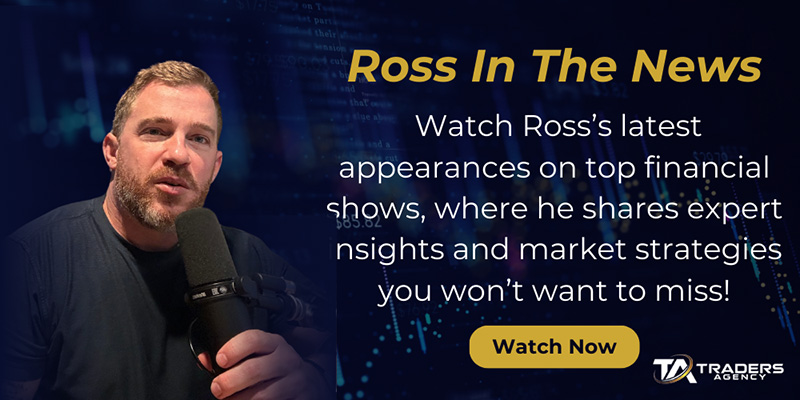Stocks have all sorts of risk as does every other financial market investment.
The key is to identify risk and know how to control it to make the right trades for gains.
This is what I keep doing for you in my Stock Surge Daily. I use my Surge Stock Indicator (SSI) system to identify stocks with less risk and more of a big yield payoff from a big surging price gain.
And to get my rundown on my SSI system, you can download and read my special report, here’s how you can get it.
The Magic of the Stock Surge Indicator
As the saying goes, “the trend is your friend.” In the game of investing, it is best to keep things simple. To follow the path of least resistance where the odds are squarely in your favor. Stocks going up tend to keep going up. And those going down usually continue that trajectory. It really is that simple. Sure, there are terabytes of underlying data that explain an equity’s rise and fall…Click here to download it now
But right now, I want to present my view of yield as a risk measurement for stock trades.
Yield Is the Yardstick for Traders
Every investment vehicle, whether debt or equity, seeks to provide one thing—YIELD.
At the end of the day, that’s all it’s really about. How much can my money grow in this asset?
Greater risk is met with greater reward since investors demand a higher return for putting their capital at risk.
Government paper offers almost no risk and therefore delivers the lowest yield.
Equity investments do not carry the same guarantees so stock investors demand a return in excess of what could be achieved with treasuries.
This is how a free market works. It is simply competition among financial products fighting for our investor dollars.
Bonds and other forms of debt offer a higher degree of safety but a lower rate of return. Stocks are inherently riskier so they must be priced accordingly to produce a higher effective yield.
The problem today is—the competition is weak.
With interest rates at all-time lows, stock prices have expanded. This increase in price relative to corporate earnings has driven the yields of common stocks down.
Some blue chips are now yielding only about 4.00%.
What Yield Actually Means for Stocks
Now you’re probably not used to hearing the word “yield” when discussing stocks, so let me explain…
Instead of buying shares of stock, imagine that you are buying an entire company. We’ll use Nike (NKE) as an example.
Nike is a Dow Jones Industrial Index stock held by millions of investors. It is considered one of the safest holdings in the US stock market because of both its size and track record of increasing profits and dividends.
To buy the entire Nike corporation would cost you $209 billion at today’s prices ($132 per share x 1.6 billion shares). As the new owner of Nike, all profits would be yours to keep. You have no shareholders demanding dividends, no board of directors, no influence from the SEC—every dollar left at the end of the year is your personal income.
So, what would you earn? Besides the endless supply of tennis shoes and track wear, your take home pay would have been $3,428,000,000 for fiscal 2020.
Impressive, right?
Not even a little!
Your return on investment would be horrible.
$3.4 billion in profits on a $209 billion purchase gives you an effective yield of just 1.62%.
You sit at the helm of one of the greatest companies in the country and you are earning less than your bank gets on your mortgage.
Think about that.
What happens if you stop paying your mortgage?
The bank takes possession of your house, sells it on the open market, and uses the proceeds to satisfy your debt.
They have collateral. It is secured debt. And even with this asset-backed safety net they demand a 4% yield on the money you borrow.
What happens if Nike stops making money?
Is there collateral you can sell to replace the capital you put at risk? Not much. Less than 14% of your investment is secured by any real tangible assets.
And what about your risks?
Maybe a competitor enters the market and steals a large chunk of your market share.
Maybe China finally raises their labor wages – and you lose access to cheap manufacturing.
Maybe the economy enters another recession – and your sales suffer.
Or maybe your customers just don’t find Nike cool anymore.
The possibilities are endless.
And your reward for investing in a business with innumerable risks and almost no protection of capital? A lousy 1.6% annual rate of return.
That’s not even close to keeping up with inflation.
Is Nike a bad company? Absolutely not. In fact, quite the opposite. It is a staple in almost every mutual fund portfolio and remains one of the highest quality stocks on the New York Stock Exchange (NYSE, ICE).
The problem is the interest rates.
The treasury market is offering measly yields, and quality corporate bonds aren’t giving up much more.
CD’s are a joke at these rates.
Dividends are averaging 1.37% for the S&P 500 Index, and preferred stocks aren’t potentially much better.
For these reasons, stocks don’t have to offer extremely high yields.
They don’t have to. They have almost no competition.
But that all changes if interest rates rise.
Let’s say the Fed raises rates by 1.00%.
Bonds start paying more. Savings account rates go up.
Across the board, investors will start seeing better yields.
In order to be enticed to buy stock and take on additional risk, you would need the company to be yielding at least the same return, if not higher.
And there’s only one way to accomplish this – lower stock prices.
There are a few macroeconomic exceptions, but for the most part this is why market crashes take place.
It’s also why they are called “corrections”. When the yields are not in line with other investment vehicles, prices must be corrected to produce a correspondingly satisfactory return.
Now you know why the stock market puts so much weight on the Federal Reserve.
And why interest rate changes of even a fraction of a percent can have a big impact.
A Real Yield Deal Right Now
I want to let you know about my brand-new product called Stealth Trades. And it has plenty of big yielding trades already booked – with more in action right now.
Stop what you’re doing and read this now. It’s that important.For the VERY first time, I’m about to rip the lid off of a specific “underground” method of investing with you.What I’m talking about is an “early warning system” that unusual activity is taking place…It gives you a chance to shadow where Big Money is placing their bets…Click here for the chance to shadow Big Money and get the opportunity for 10 times the gains you might see otherwise.



